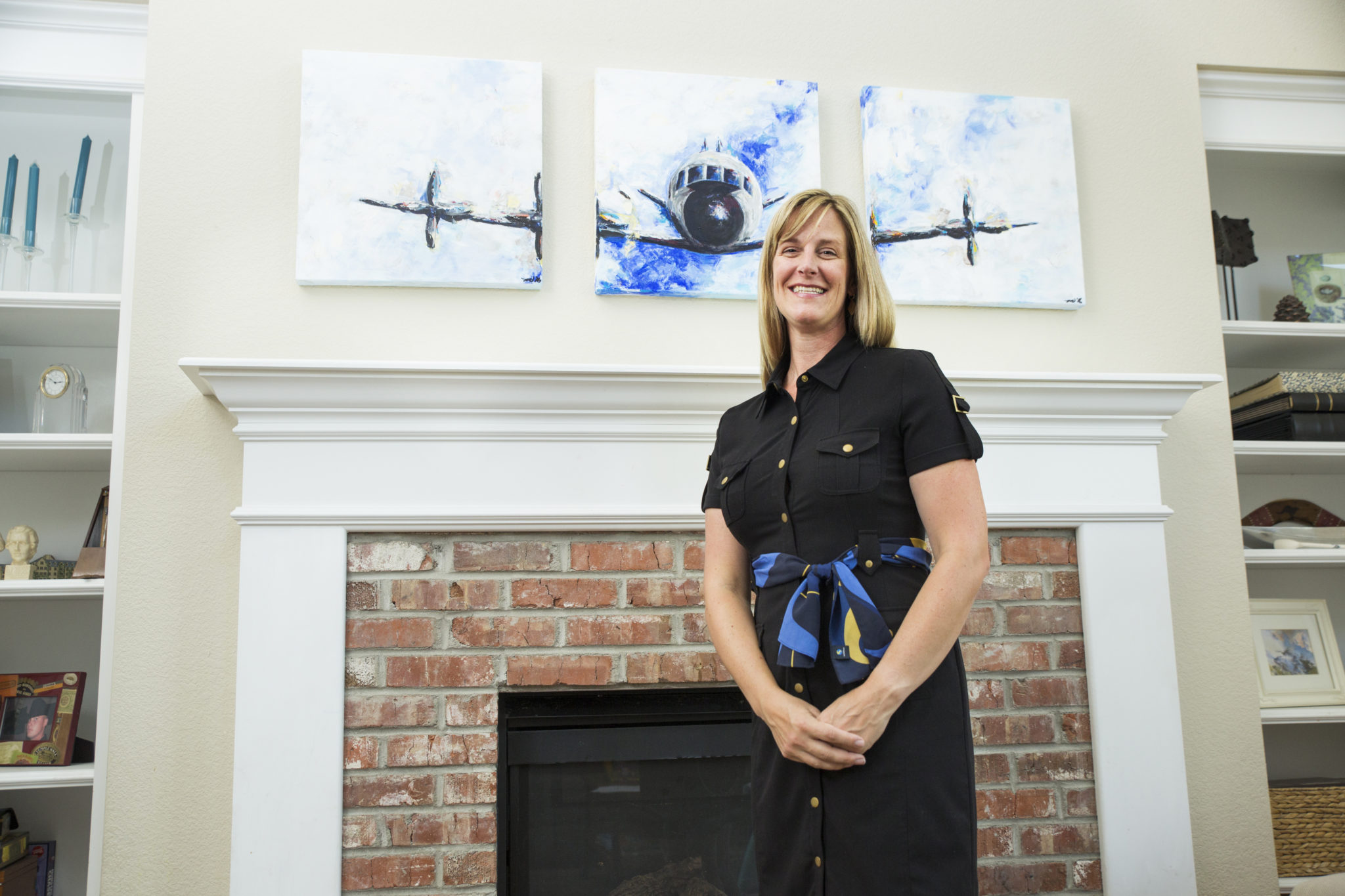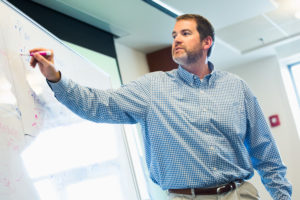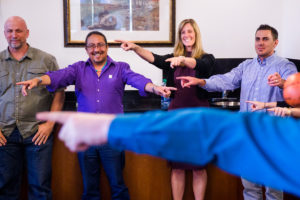
It takes focus, commitment, and courage to become a Navy pilot, and Kristin Mabbutt was up for the test. During her eight and a half years serving in the U.S. armed forces she learned to fly aircraft from the P-3C Orion – a 77,000 pound anti-submarine and maritime surveillance plane – to the more nimble C-12 twin-engine turboprop used for personnel transport and medical evacuations.
And on the day before earning her wings, having mastered skills as diverse as fixed-wing piloting, water survival, and weapons management, Kristin took on another challenge: She got married.
She and her husband, Chris Mabbutt, met as classmates during flight school in Corpus Christi, Texas. He was manning the radio as she took off on her first solo flight, and after that the two fell in sync. Flying side by side, they moved through their military careers together.
Seeking expertise
When she wasn’t in the air, Kristin rotated through a slew of ground jobs with responsibilities ranging from managing operations to complex scheduling and aviation maintenance.

However, the skills she was picking up left her with a desire to learn more.
“You’d get a broad overview, just enough to do your job,” said Kristin, who wanted to dig in further.
“Quite a few people took advantage of the G.I. Bill and were able to get their master’s while serving,” she said.
However, she always found herself too busy to dedicate the time needed to pursue a degree.
After leaving the Navy and entering civilian life, Kristin and her husband made their way to her hometown of Denver to be near family, and found jobs in the healthcare industry.
Kristin entered a production supervisor role at a medical supply company in Boulder, and Chris began working at Kaiser Permanente.
The time she spent in the Navy had equipped her with strong leadership skills and a dedicated work ethic that were “good enough to get me into the civilian workforce,” she said.
But she knew that to keep moving forward she would have to hone her business skills.
The flexibility of executive education
When Kristin was promoted to regional service director at Hill-Rom in 2016, she knew the skills she would gain from a master’s degree would be essential to supporting her career.

Her husband had graduated from the Executive MBA program at Colorado State University and seeing his journey through the program, she decided to apply herself.
The new role gave her oversight of three teams made up of project managers and engineers, and she wanted to be an effective leader for them.
“I always felt like I needed those skills, and this position was really challenging me,” said Kristin. “For the first time I had my own budget, I was responsible for [profit and loss statements] and directly responsible for recognizing revenue.”
With her busy work schedule often taking her outside of Colorado to cover the Western region for her company, making the time to earn a degree didn’t seem practical.
But when the Executive MBA program changed its format to alternate between on-campus classes and online education, it opened the door for Kristin.
“I can make this work, I can do every other Saturday,” she said. “I knew it was going to address everything I felt I needed to be successful in this role … It’s super flexible and they’re willing to work with you.”
Growing through experience
Kristin was drawn to CSU’s MBA by a desire to learn more about finances and become a more capable manager, and now as a student only a quarter of the way into the degree, she’s already starting to see how it will benefit her career.

Kristin Mabbutt laughs with her classmates during a team building exercise during their Executive MBA orientation.
After taking her first accounting class in the program she has become more confident in breaking down financial statements and understanding their practical implications.
“One of the big things our professor did a really good job of was tying the material to real world examples,” said Kristin, describing the benefit of having educators with their own companies and extensive business experience.
The small cohort model has also helped her begin to forge strong relationships with her peers, who bring sophisticated perspectives from diverse industries.
When Chris was in the program, he accepted a job offer from one of his classmates halfway through, and since graduation has stayed in touch with a number of his fellow students both personally and professionally.
“I saw that, and saw how much he enjoyed his time with them. That was a big decision point for me, because I expect the same thing,” said Kristin.
